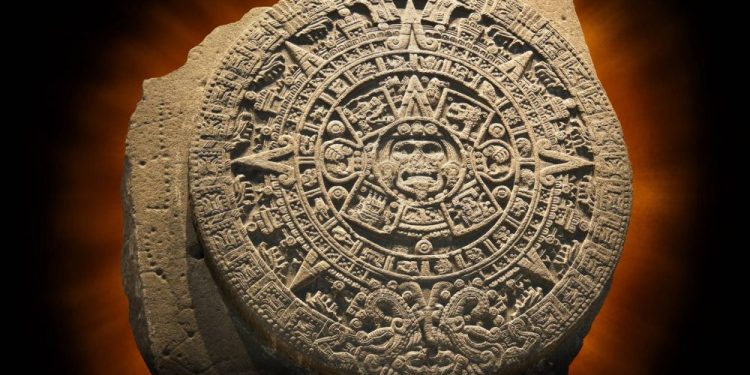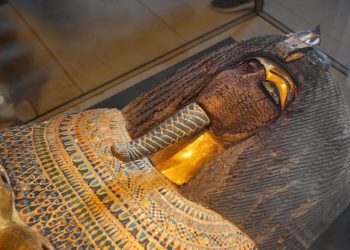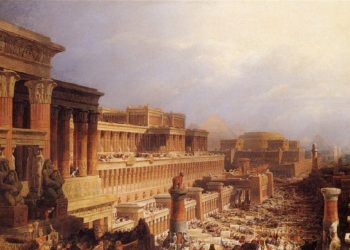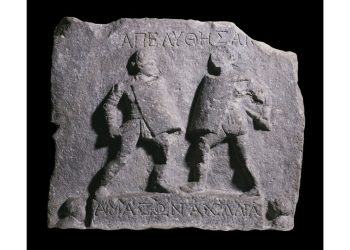If you think the ancient Egyptians or Greeks had many gods, you should see how many Mesoamerican deities in the Americas were worshiped by the pre-Colombian civilizations. Each culture had a god for every existing thing in life and more. This is also why I expect you probably will not have heard of most of the Mesoamerican deities I selected below. This list could go on forever, but I selected several Gods that may be interesting. These ancient cultures had such complex and rich mythologies that a single lifetime would not be enough for us to learn everything.
1. Cocijo – Zapotec God of Rain/Lightning
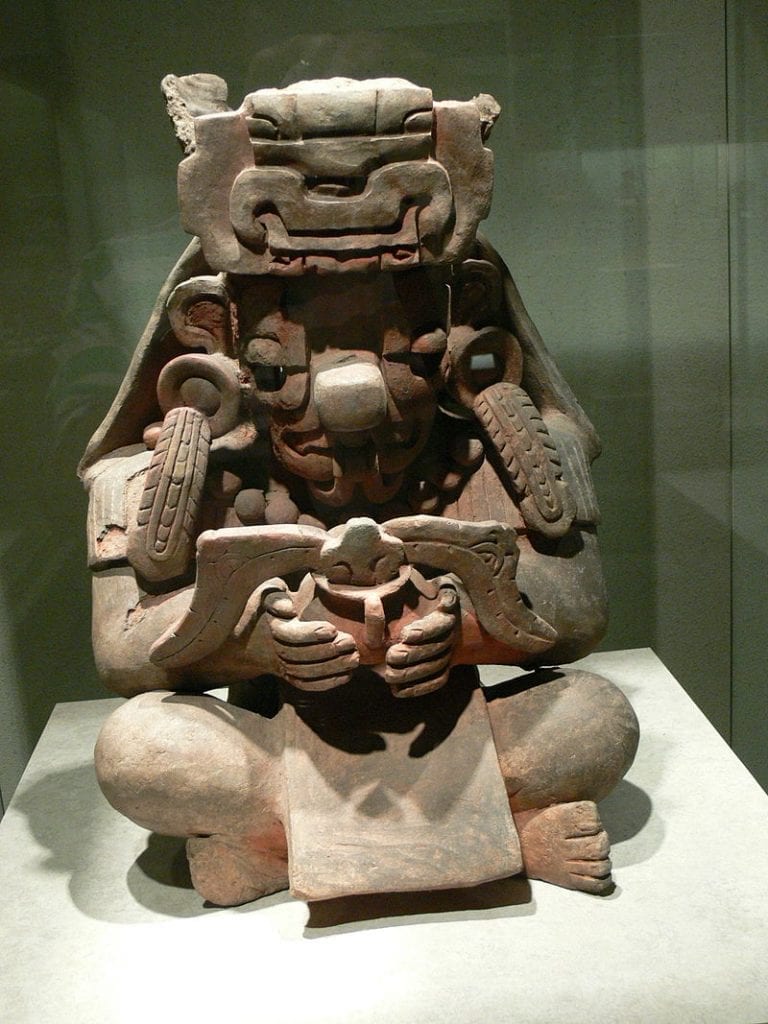
The gods of the Zapotecs had various functions and duties. We can simply say that this culture relied on a smaller number of deities, but they all were almighty. Cocijo is one of the main gods of this culture, mostly referred to as the god of rain. Of course, he is also known as the god of thunder and creation (although the creation of the universe was not his constant occupation). The similarities with the Aztec rain god Tlaloc are obvious and should be no surprise. And yet, these are different gods!
2. Ixchel – Maya Goddess of Childbirth
Guessing from the name, Ixchel was the Moon Goddess of pregnant women in the Maya culture. Besides childbirth, Ixchel is known to be the inventor of weaving and other important crafts in the Maya culture. Her appearance is truly characteristic and you can never get it wrong – red-faced with hair made from real serpents.
3. Tezcatloipoca – Aztec God of Night and Death
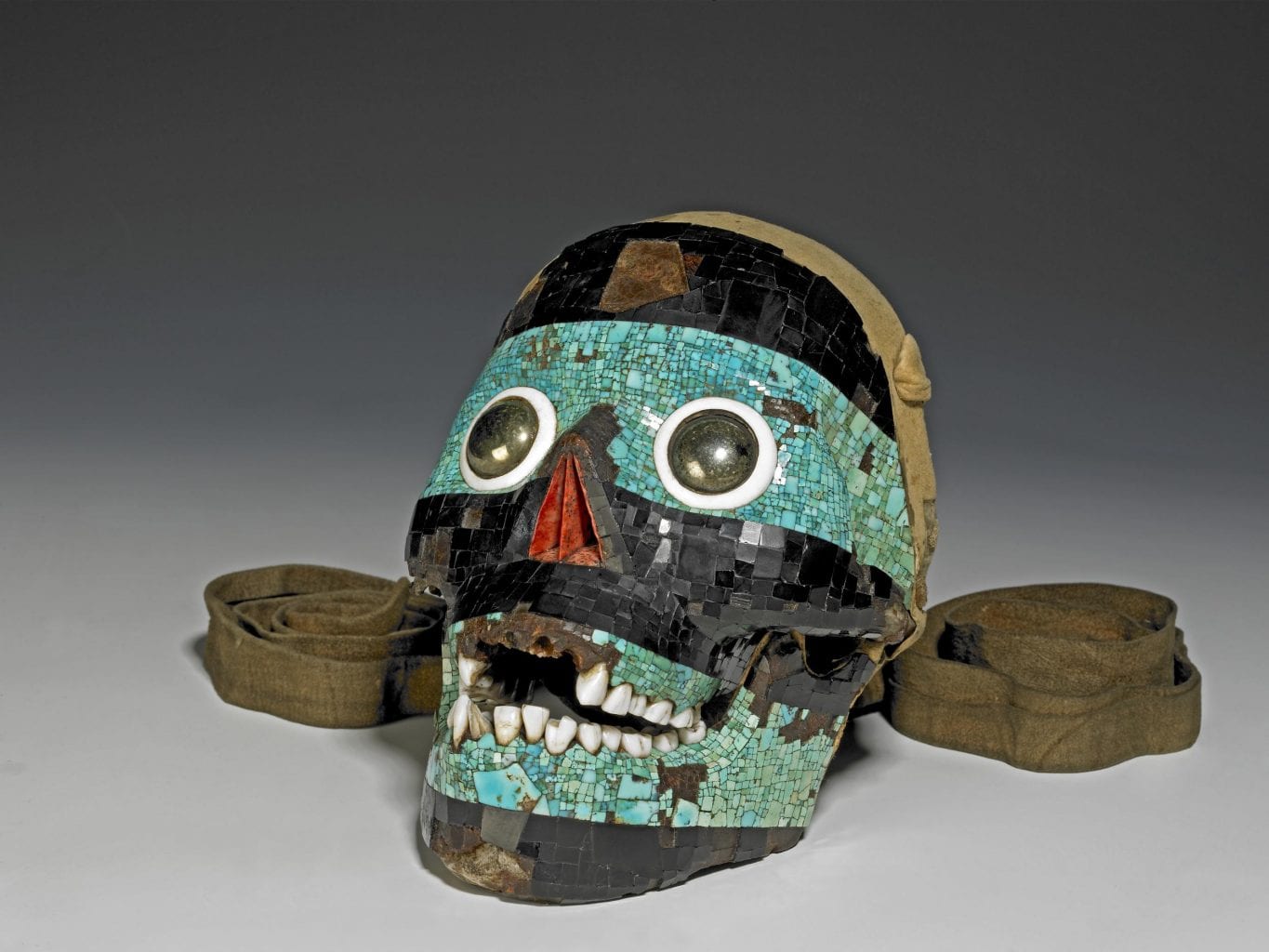
Tezcatlipoca was the God-rival of Querzazlcoatl, who fought endless battles with him from the beginning of the creation of the universe. He brought devastation to the world, which is why the Aztecs feared him. He is known to carry a smoking mirror to confuse his enemies and bring them to his path to evil. He is also known to be a shapeshifter, often changing his appearance to that of other Gods.
4. The Olmec Dragon – Olmec God of Earth
The Olmecs had eight main Gods characterized by human-like or animal-like attributes. The Olmec Dragon represented the Earth or, generally, the place where humans lived. He was illustrated as a chimera with crocodile, eagle, jaguar, and human features. Other than the God of Earth, he represented things like agriculture and fertility.
5. Ah Puch – Maya God of the Underworld
In Maya culture, Ah Puch was the almighty God of Death and Ruler of the Underworld & Hell. He is considered the forebear of numerous other Gods in Mesoamerican cultures, like the Aztec God of the Underworld – Mictlantecuhtli. According to legends, the only way to escape his attention was to show that you are already suffering – scream, cry, roar. This would show Ah Puch that another of his demons is already dealing with you, and he would leave you in peace.
6. Inti – Inca Sun God

Inti was the son of the Inca God of Creation, Viracocha, and one of the most powerful Mesoamerican deities – the Inca Sun God. Inti was so sacred to the Incas that his name was not to be mentioned out loud. He was depicted in a rather simple way – as a golden sun disc with a face. Every Inca ruler was his manifestation in human form which meant that each Emperor was almighty and considered a demi-God.
7. Chaac – Maya Rain God
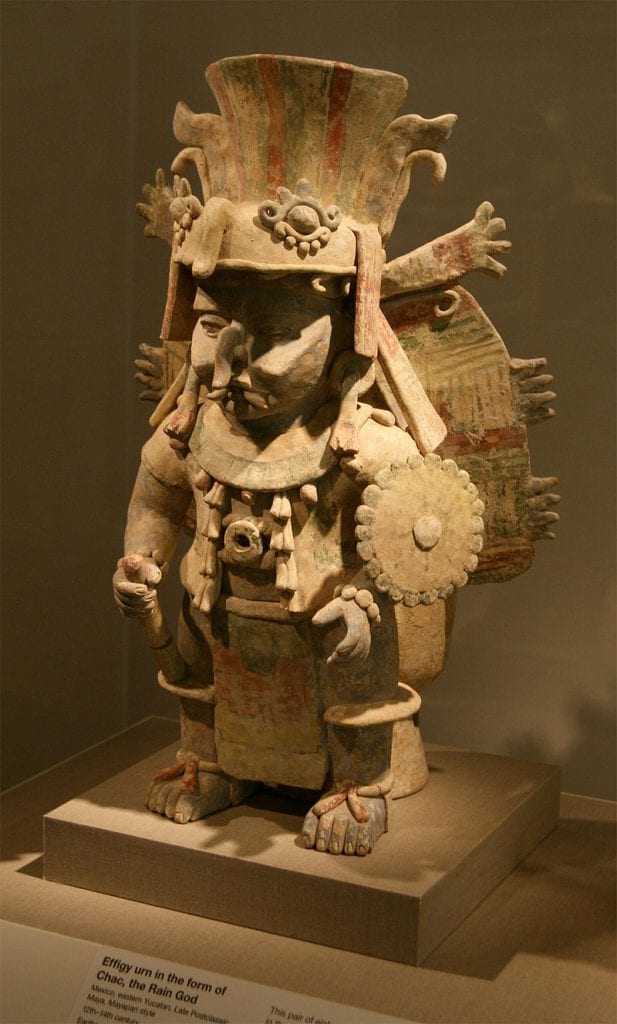
Chaac is the Maya God of Rain, Fertility, and Agriculture. He is believed to have the form of a reptilian creature with a rather atypical face, although statues of the god generally present Chaac as a human. Despite his somewhat terrifying appearance, he taught his farming secrets to humans for free and cared for their crops and harvesting.
8. Al Apaec – Supreme God of the Moche Culture
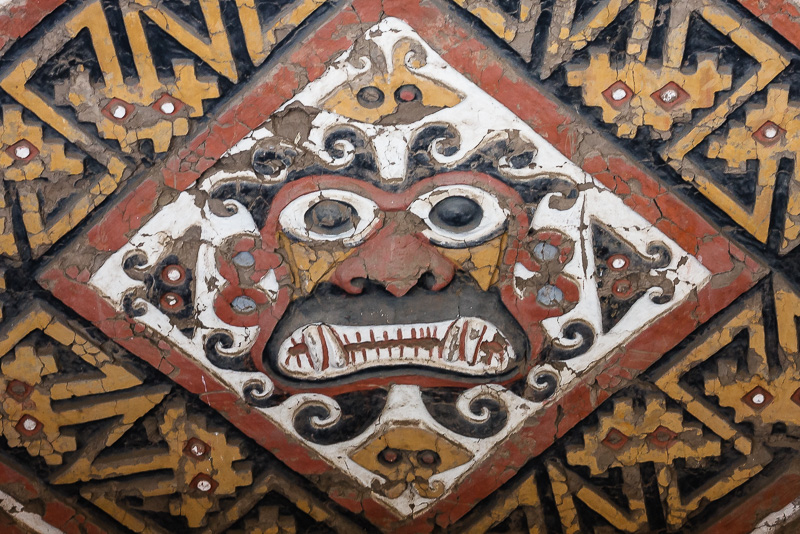
The Moche culture is one of the lesser-known ancient civilizations that inhabited a large coastal area in Peru between 100 to 700 AD. Al Apaec was the Supreme God of the Moche culture, the Creator of the Universe, the protector of the Moche, and many other things. His name translates as the “maker.” There are several depictions of Al Apaec. Sometimes he is represented as a spider with an anthropomorphic face.
Other times he has more human-like characteristics, and often – he is presented holding his head in his hands. Not much is known about the Moche culture and their religion, as this civilization vanished around 700 AD but depictions of Al Apaec have been discovered on various occasions. Undoubtedly, one of the most mysterious and curious Mesoamerican deities.
9. Huitzilopochtli – Aztec Sun God of War
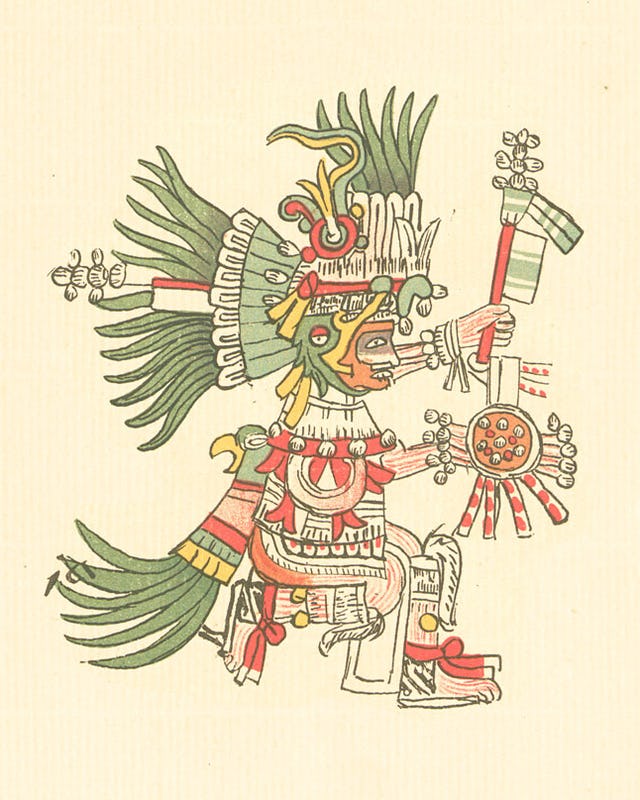
Huitzilopochtli was one of the Chief Gods of the Aztecs and one of the most powerful Mesoamerican Deities you can think of. From his birth, he was armed and ready for war. Every Aztec victory on the battlefield was considered his triumph, which is why the Aztecs considered him their Warlord and made massive human sacrifices to him.
His story is rather terrifying as well. His mother, Coatlicue, was murdered before he was born after his brothers and sister issued her death. What did Huitzilopochtli do in return? He killed all 400 of his relatives.
10. Huracan – Maya Storm God
The name says it all – Huracan was the Maya god of Storms and Hurricanes. It is curious that in the legends, he was also behind the early Creation of life on Earth. Nevertheless, the earliest humans were not good enough, and Huracan had to destroy them with his storms. His appearance is rather curious. He is often described as one-legged. One of his legs was a normal human leg, while the other one was a serpent.
Have something to add? Visit Curiosmos on Facebook. Join the discussion in our mobile Telegram group
Sources:
• AI APAEC – the Inca Supreme God (Inca mythology). (n.d.).
• Cartwright, M. (2020, December 22). Tezcatlipoca.
• Cartwright, M. (2020, December 24). Inti.
• Cline, A. (n.d.). Ah Puch – Mayan God of Death.
• Cocijo, Zapotec God of Rain & Lightning. (n.d.).
• Evan Meehan 5. (n.d.). Huitzilopochtli.
• Hirst, K. (n.d.). Maya Goddess of the Moon, Fertility and Death, Ix Chel.
• HURACAN – the Maya God of Storms (Maya mythology). (n.d.).
• Maestri, N. (n.d.). The Curly-Nosed Mayan Rain God Chaac Had Ancient Mesoamerican Roots.
• Minster, C. (n.d.). The Gods of the Olmec.



